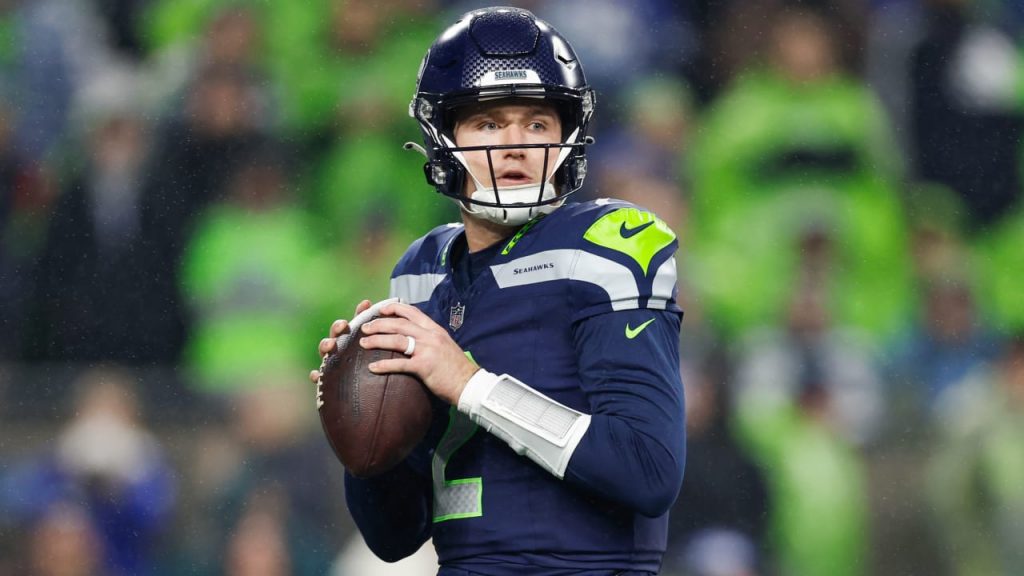NFL Prea-season Offensive Analysis
The NFL is back! The regular season is drawing ever closer, and as the days pass, we engage in our annual tradition of taking a broad view of the entire league before diving into more detailed analyses once the season begins.
As part of this comprehensive overview, we’ll be using the coming days to compare the two conferences across every position, assessing which group of teams has the upper hand. Today, we start with the offense, and later this week, we’ll turn our focus to the defense.
Derrick Henry & A.J. Brown reunited 🤝@KingHenry_2 | @1kalwaysopen_ pic.twitter.com/pHE2wn8JsX
— NFL (@NFL) August 10, 2024
Quarterback: Advantage AFC
Last year, we confidently gave the AFC a significant edge at the quarterback position. But after a season where Dak Prescott finished second in MVP voting, Brock Purdy solidified himself as a top-tier quarterback in his second year, Jordan Love made strides toward elite status, Jared Goff had a career year, Matthew Stafford returned to form after injury, and Kyler Murray made a strong comeback from an ACL tear, the NFC has narrowed the gap considerably. Additionally, the NFC gained the top two draft picks, Caleb Williams and Jayden Daniels, further bolstering its quarterback pool.
However, the AFC may still house the top four or even five quarterbacks in the league. Patrick Mahomes stands as the undisputed best player in the NFL, with Josh Allen a tier below but still ahead of everyone except Mahomes. Lamar Jackson, Joe Burrow, and C.J. Stroud could arguably be the next three best quarterbacks. Add in talents like Justin Herbert, Aaron Rodgers, Trevor Lawrence, Tua Tagovailoa, and Anthony Richardson, and the AFC’s wealth of top-tier talent is hard for the NFC to match.
Running Back: Advantage NFC
Led by Christian McCaffrey, the best running back in the NFL, the NFC clearly holds the upper hand at running back. In addition to CMC, the NFC boasts players like Bijan Robinson, Saquon Barkley, Jahmyr Gibbs, David Montgomery, Josh Jacobs (formerly of the AFC), Aaron Jones, James Conner, Kyren Williams, Kenneth Walker, and Zach Charbonnet. Even more depth is added with talents like Austin Ekeler (also from the AFC), Brian Robinson, D’Andre Swift, Ty Chandler, Rachaad White, Kenneth Walker III, and rookies such as Jonathon Brooks, Trey Benson, MarShawn Lloyd, and Bucky Irving.
The AFC has explosive players like Breece Hall, Jonathan Taylor, Derrick Henry, De’Von Achane, and Raheem Mostert, alongside solid starters like James Cook, Rhamondre Stevenson, Travis Etienne, Joe Mixon, and Isiah Pacheco. Intriguing split backfields in Cincinnati (Zach Moss and Chase Brown), Pittsburgh (Najee Harris and Jaylen Warren), and Tennessee (Tony Pollard and Tyjae Spears) also add interest. However, the uncertainty in several AFC backfields and the top-end skill in the NFC give the NFC the clear edge.
Wide Receiver/Tight End: Advantage NFC
NFC wide receivers and tight ends outperformed their AFC counterparts last year, excelling in metrics like targets per route run, catch rate, yards per reception, yards per route, explosive catch rate, first downs per target, success rate, and drop rate. The NFC also added the top three wide receivers in the 2024 NFL Draft: Marvin Harrison Jr., Malik Nabers, and Rome Odunze, all of whom could have been the top receiver in any other draft class.
With stars like Justin Jefferson, CeeDee Lamb, A.J. Brown, De’Vonta Smith, Amon-Ra St. Brown, D.J. Moore, Keenan Allen, Puka Nacua, Cooper Kupp, Deebo Samuel, Brandon Aiyuk (for now), DK Metcalf, Tyler Lockett, Jaxon Smith-Njigba, all 41 Packers receivers, Terry McLaurin, Drake London, Chris Olave, Mike Evans, and Chris Godwin, the NFC is stacked. The conference also saw breakouts at tight end with Sam LaPorta, Trey McBride, and Jake Ferguson, who join established stars like George Kittle, T.J. Hockenson (once he returns from injury), and Dallas Goedert, along with intriguing talents like Kyle Pitts, Cole Kmet, Noah Fant, and Green Bay’s young tight ends.
While the AFC has standout receivers and tight ends like Ja’Marr Chase, Tee Higgins, Tyreek Hill, Jaylen Waddle, Garrett Wilson, Zay Flowers, Amari Cooper, Michael Pittman Jr., Christian Kirk, Nico Collins, Tank Dell, Stefon Diggs, DeAndre Hopkins, Calvin Ridley, Davante Adams, Rashee Rice, Marquise Brown, Travis Kelce, and Mark Andrews, the NFC’s depth in pass-catching talent gives it the advantage.
Offensive Line: (Very slight) Advantage NFC
Looking at our offensive infrastructure rankings from earlier in the NFL offseason, it’s clear that the battle along the offensive line is close.
The 16 AFC teams had an average offensive line grade of 3.47, while the 16 NFC teams averaged 3.59. The NFC features elite tackles like Trent Williams, Penei Sewell, Tristan Wirfs, Christian Darrisaw, and Lane Johnson, as well as top-tier guards like Zack Martin, Tyler Smith, Chris Lindstrom, and Landon Dickerson. Considering the injury concerns in the AFC (Miami, New York, Baltimore, Cleveland), some teams coming off down seasons (Kansas City), and others undergoing major shuffles (New England, Pittsburgh, Houston, Tennessee, Denver, Los Angeles), the NFC may have a slight edge, even with AFC standouts like Laremy Tunsil, Joe Thuney, Trey Smith, Creed Humphrey, Orlando Brown, Kolton Miller, Rashawn Slater, Dion Dawkins, Tyler Linderbaum, Wyatt Teller, and Joel Bitonio.
That was this season’s NFL Offensive analysis!
FINAL: First win of the preseason for the @Eagles! #PHIvsBAL pic.twitter.com/HErlmuOVmD
— NFL (@NFL) August 10, 2024
Read more sports news:
- Vatican Addresses Controversial “Last Supper” Drag Performance at 2024 Paris Olympics
- Daria Kasatkina Reveals Her Love Story with Natalia Zabiiako – ‘She Pretended to Love Tennis’
- Should the Brooklyn Nets Model Their Rebuild Like the OKC Thunder? How Quickly Could the Brooklyn Nets Become Top Contenders in the NBA?


